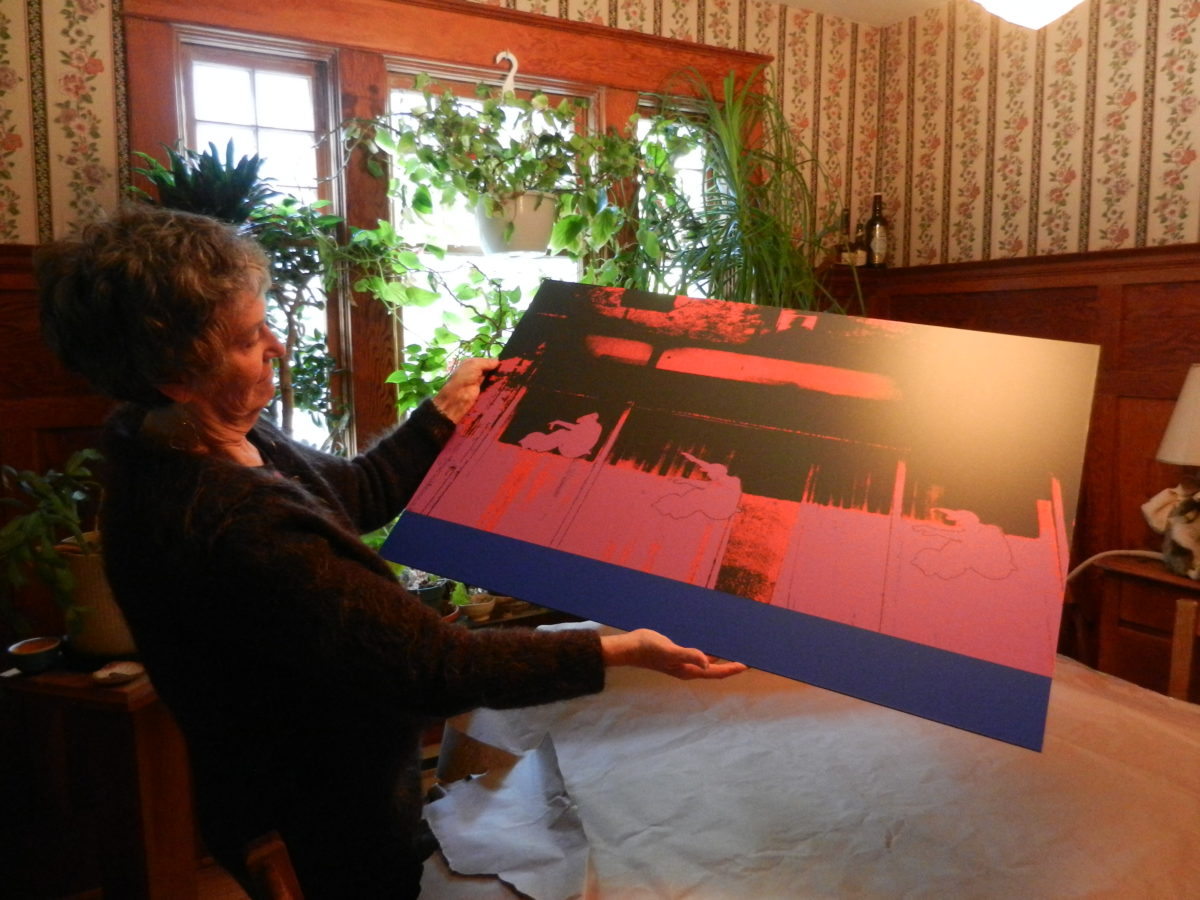


She breaks the dark chocolate bar with cocoa splits she bought from the organic food store into little pieces. Her cat wanders around her feet. Laughter lines frame her blue eyes. She turns her head and asks, “So, how can I help you, sweetie?”
I ask about her artwork. She smiles, looks out the window and then tells me about her photography and her life.
Patricia Campbell remembers sitting at the table as a girl when her father told her, “Now, we’re Canadians.” It was March 31, 1949, the day Newfoundland joined Canada. Her father, originally from Nova Scotia, met her mother during the Second World War in Newfoundland. They married and had Patricia and six younger children. Her dad loved the movies. He would often take his oldest daughter to see a film as a birthday gift, or if she had been a good girl. He loved musicals and operas. At home, he listened to CBC Radio, which had just started at that time.
“I think it was mostly the beginning of my caring about photography … without me realizing when I was child,” she said.
Nobody in her family did photography. Maybe her father would have been an artist if the circumstances were different, she said. But it was war. He was in service and could enjoy the arts only as a pastime.
Because Campbell was born during the Second World War, she grew up safely with her grandmother in Newfoundland. Her father’s mother in Nova Scotia needed care, so her parents moved down to the Maritimes and left their toddler daughter to be grandmother’s “little baby.”
When the war was over, her parents brought her to Cape Breton Island, N.S., to live with them in a neighbourhood full of children. At first, she wanted to go back to her grandmother, but after a while she started liking her new home.
The importance of family, especially her grandmother, is mirrored in Campbell’s art. She recently finished a collage of a photo of her grandmother and a picture of herself. She used photoshop to play with the two photos and enlarged her collages at a local print shop.
Campbell said she likes to show social issues in her artwork, such as breast cancer.
“A couple of my friends had it. It was so traumatic and so stressful. There was a woman on CBC who at the time wrote a book called The Politics of Breast Cancer and I still have it. She had breast cancer herself and she wrote about it. She wrote about it in a way that I have never heard of before. When I read that, I thought I would do something about that.”
Other times, Campbell likes to play with the photos she takes. One time, she said, she found a doll and a wooden box she arranged to take pictures of. She also kept a journal while working on her artwork and sometimes published it when exhibiting her work.
A young man from New Zealand who was renovating her house saw her artwork and asked her if he could show it to his wife. The couple had just opened a gallery in the Fundy area and gave Campbell the opportunity to showcase her work. She did more exhibitions with the couple over the years, but then they moved away.
Campbell made her art visible in other ways. About 10 years ago, she won a contest in Montreal.
“It’s a picture of a monument and it’s close to the Place des Arts. It’s a face and it’s on top of a pole. It was a weird picture, but I sent it. I thought, they may laugh at me, but who cares.”
She spent years working and studying in Montreal. She graduated from nursing school then went to finish her undergraduate in psychology and a masters in religious studies, anthropology and sociology of religion.
She said she loves the Maritimes, but she also loves Quebec, especially Montreal. When she moved in with her partner Frank Szeligo, a former psychology professor at UNB, she told him, “You have to make me one promise: Bring me back to Montreal fairly often.”
And he did, she said. They bought a house in Fredericton, a house that now looks like an artist house, Szeligo said. It’s not only the paintings and decorations on the walls that make their house an artist house, but the bold colours Campbell chose for the walls and the woodwork.
“I wouldn’t have the courage to choose bold colours, but she does it and it works out well. And it’s enjoyable to live in an artist’s house,” he said.
“Art isn’t just what someone does, it’s also the implementation of what you understand about whatever art is in your every day life.”
